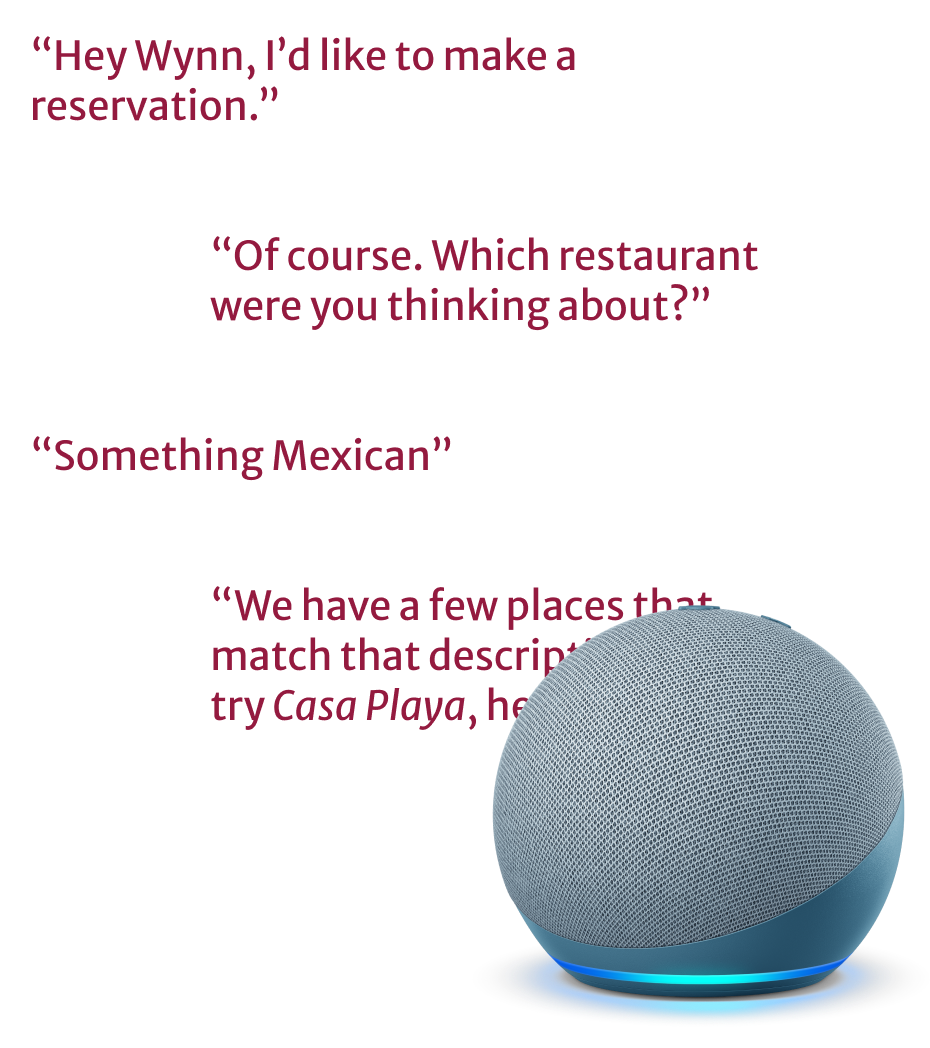
Case Studies
Reducing Concierge Call Volume at Wynn Resorts
Overview
Wynn Resorts asked RAIN to design an in-room virtual assisant that could handle common requests and questions, freeing up concierges and hotel staff for other tasks.
My team collaborated on a voice “concierge” to put an Alexa devices in 5,600 rooms and suites at the Wynn Resort in Las Vegas. I led the UX and UI design of the conversational interface.
Company
RAIN
Client
Wynn Resorts in Las Vegas
Platform
Voice UI for Amazon
My Responsibilities
- Research
- Information Architecture
- Content Strategy
- VUI Design
85.6%
found the Alexa flow easy or very easy to use
83.7%
were happy or very happy with the service
4.8k
questions looking for bar or restaurant recommendations in the first two months, signicant for a voice-only application
12k
questions just about the hours of operations of bars, restaurants, and workout facilities in the first two months
Problem
How do we reduce concierge call volume so that desk staff could focus on more important matters?
For this project, the primary business goal was reducing concierge call volume so they could focus on front-desk matters that really needed them.
For the user, the benefit is reducing friction for basic tasks like room control, ordering amenities, and making restaurant reservations.
Research
Beginning to understand users with proto-personas
Due to budget restrictions and a long distance from Wynn Resorts, we didn’t have an opportunity to do up-front user research with actual guests at the hotel, though we knew there was interest from an internal survey that Wynn had conducted.
66.8%
of 40,000 guests surveyed said they would book a room with Alexa
In light of these constraints, I designed four proto-personas: educated guesses at the sort of people who might be using Alexa to make reservations at a restaurant. These were not informed by any new research, outside of our conversations with subject matter experts. But they helped us develop a shared understanding, and facilitated prioritization efforts going forward.
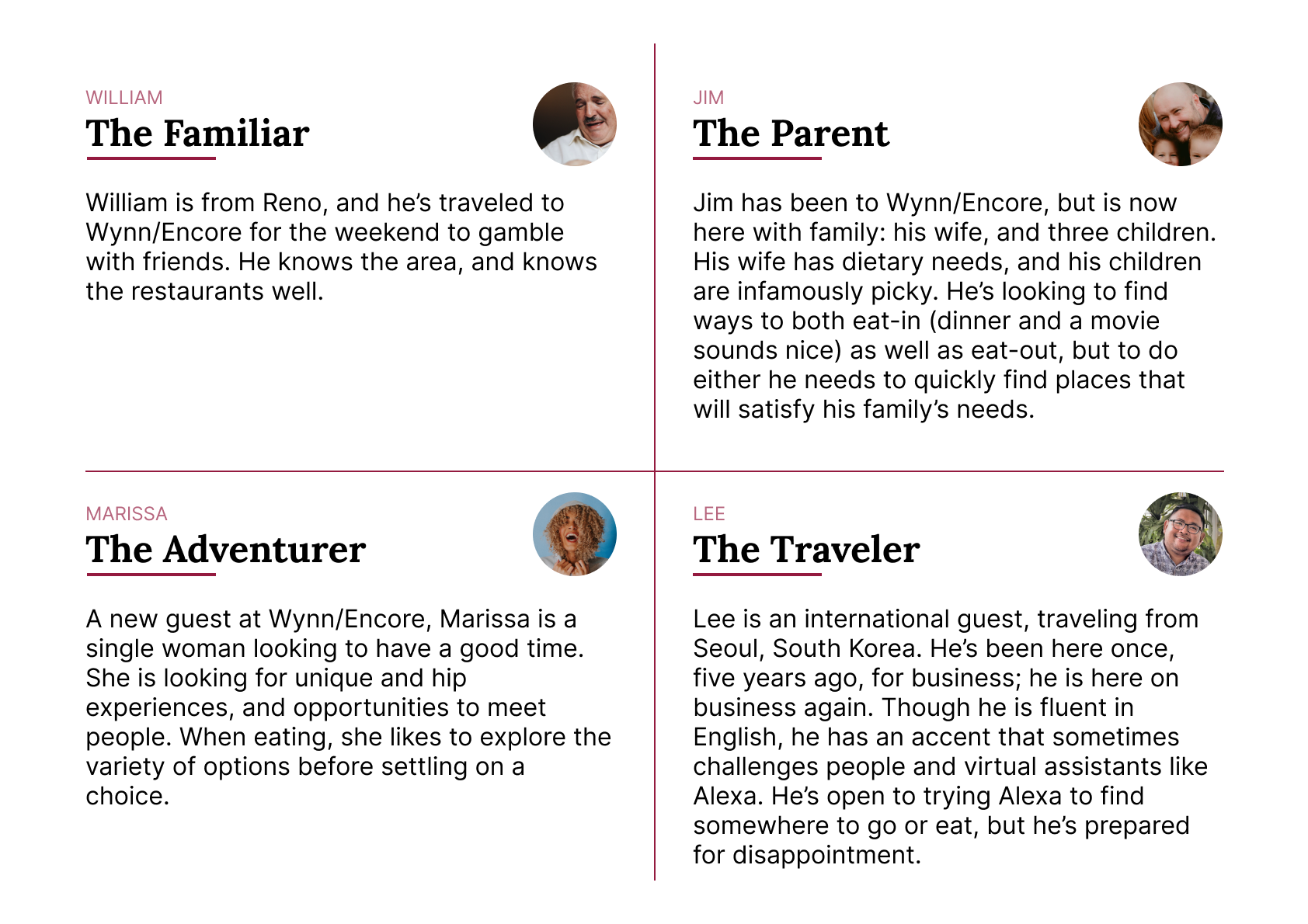
The main distinctions between these customer segments:
- How familiar each persona is with Wynn/Encore’s offerings
- Whether that person wants to explore or knows precisely what they want
- Whether the person is alone or has a family. In other words, if they have other needs they need to negotiate.
Drawing from these four proto-personas, and in discussion with Wynn, I acted as product manager in drawing up core user stories that would guide our initial efforts.
Rapid Prototyping and Scripting
Rapid prototyping of key user stories
Before I script (and constantly throughtout the process), I talk everything I write out loud. This is important for at least two reasons:
- It helps me keep the tone conversational
- It reminds me that what I write will be heard, not read. It’s the aural/audio equivalent of a napkin sketch.
Here’s a recording of my first “talk-to-myself” process for the restaurant reservation flow, a high-priority flow.
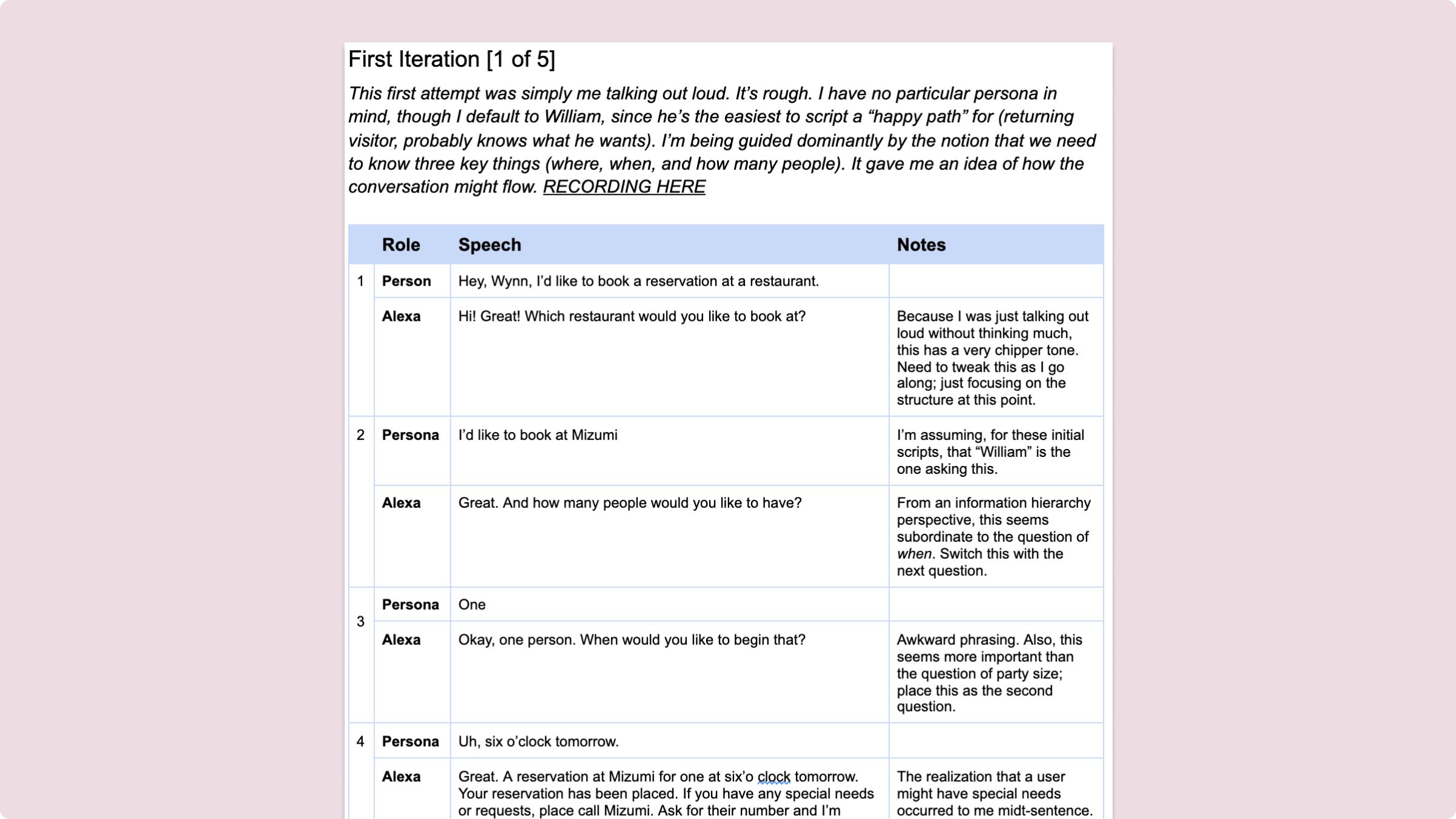
Though awkward and filled with too much of my own personality, it served as a starting point. I put it down on paper, and worked through several iterations, with the scripts evolving in a parallel fashion. I tested these informally, in stand-ups or with family and friends, to refine the overall flow.
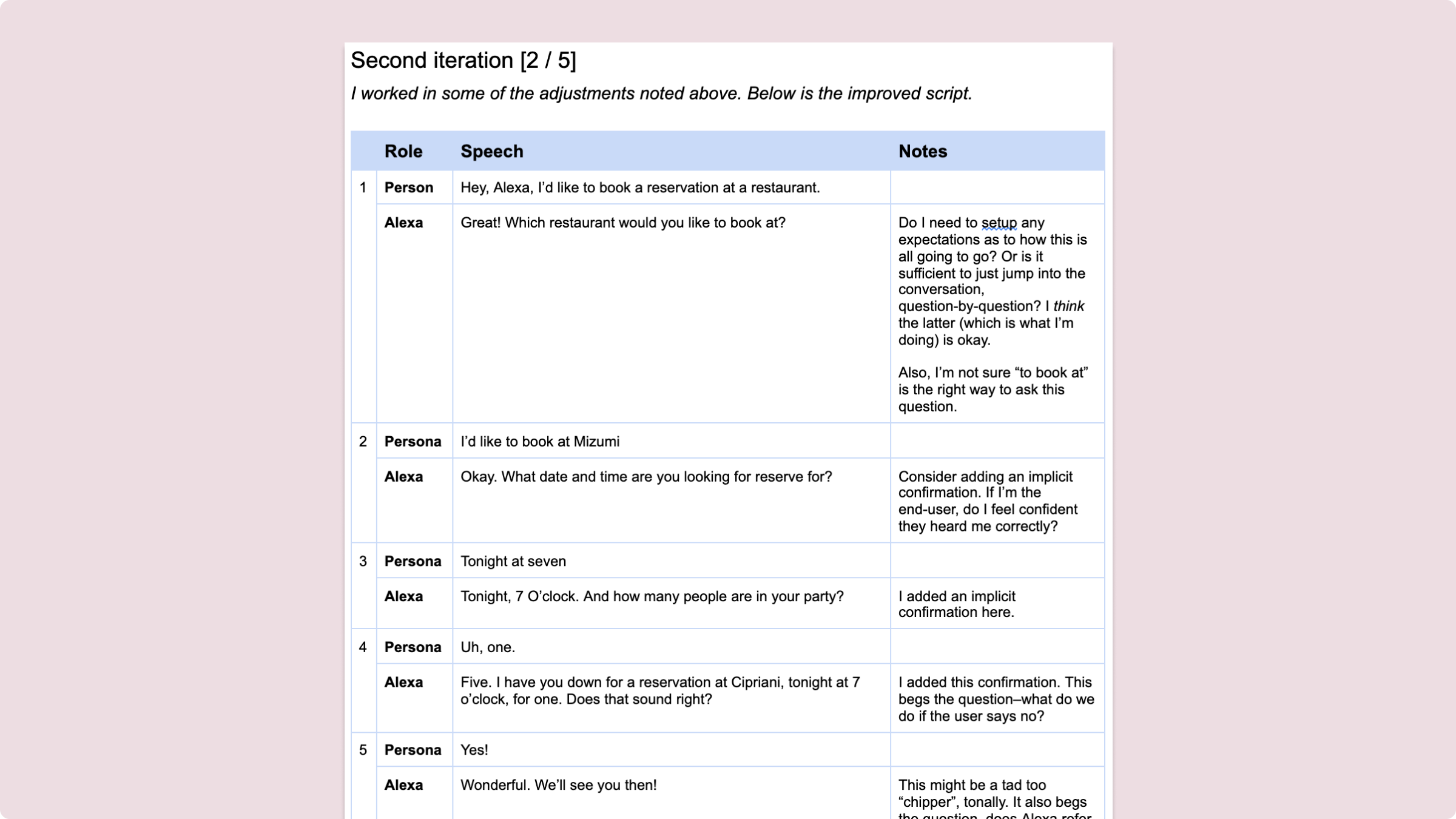
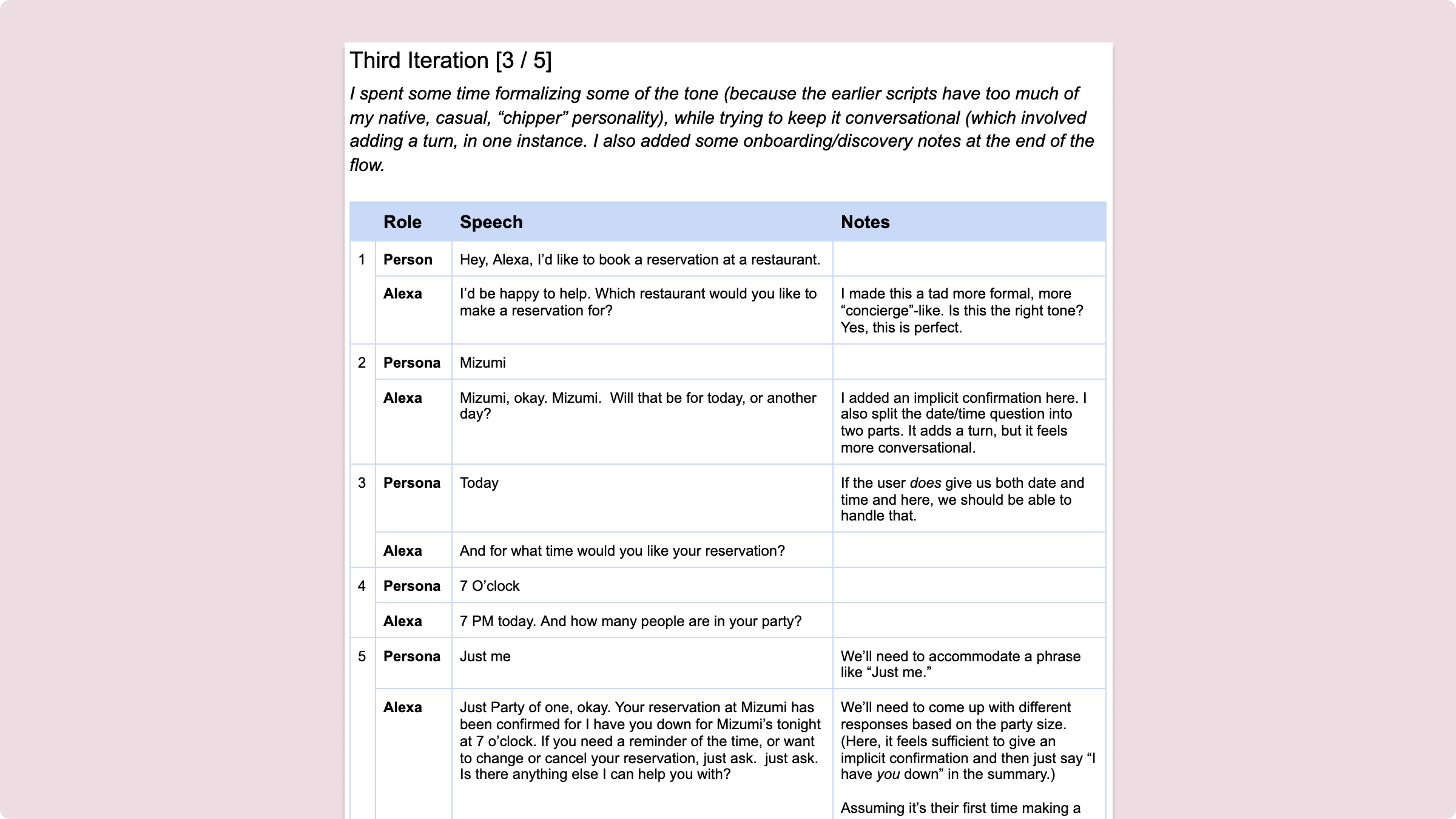
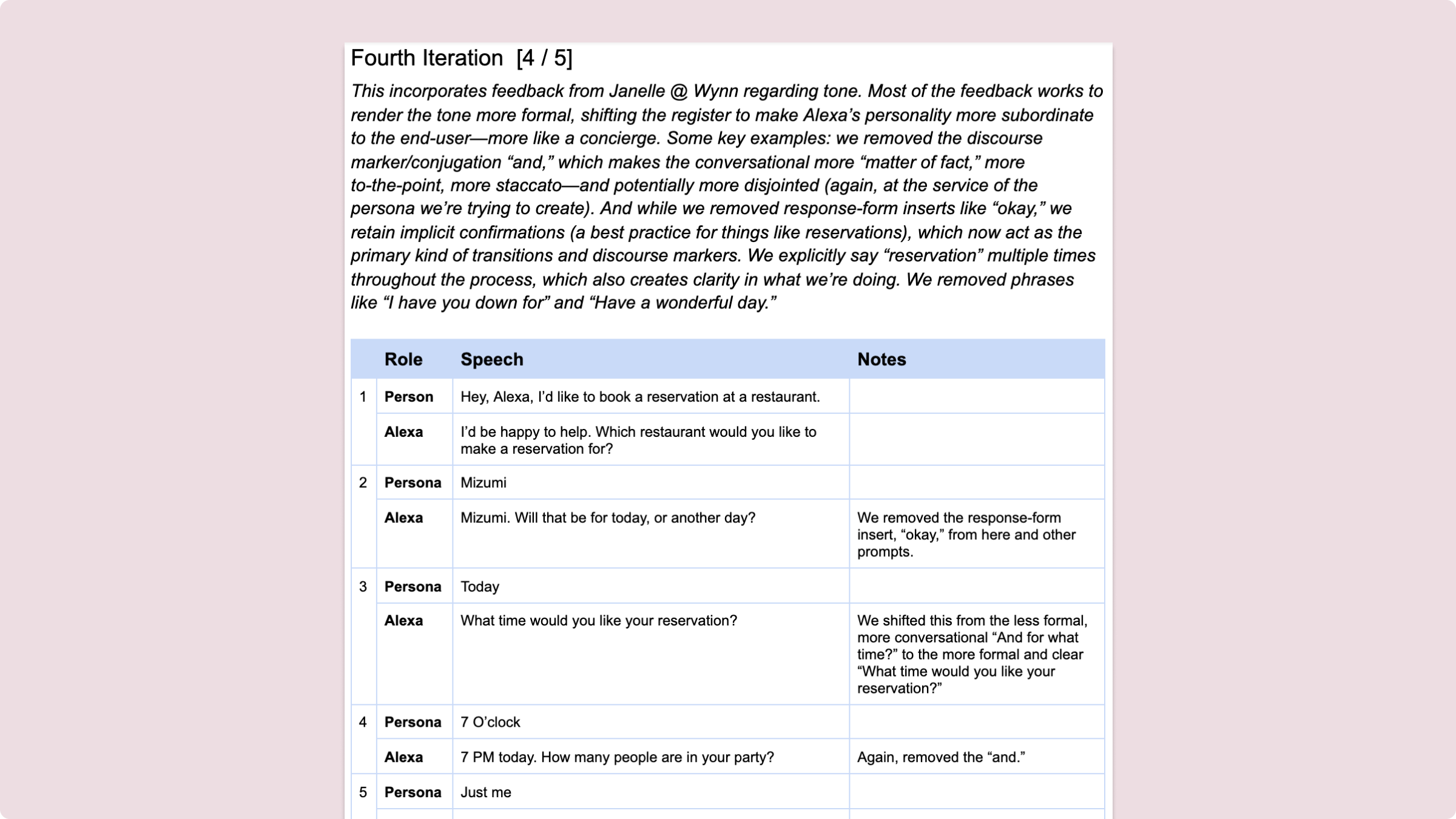
This culminated in a final iteration.
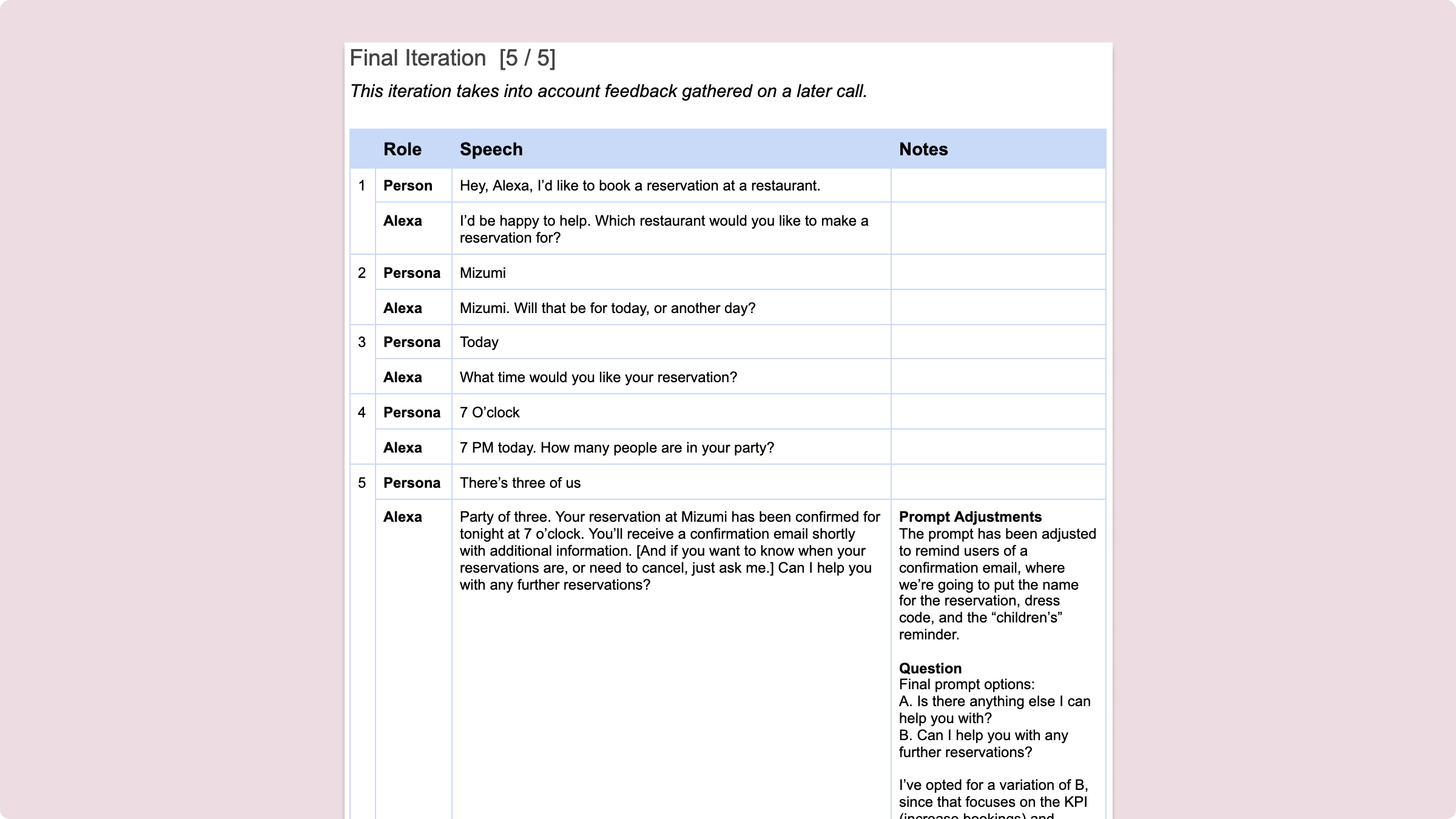
Hearing the final version, I had some reservations (pun intended). Although on paper, it had seemed like a good idea to split the “day” and “time” questions, it sounded awkward. And we had designed this for the persona who knew what they wanted (“The Familiar”) , instead of for the more likely personas: people who did not necessarily know what restaurant they would like (“The Adventurer” and “The Parent”).
Still, through the process we had aligned on the Wynn team’s business objectives, as well as important voice and tone considerations. I felt good about launching into some usability testing.
VUI Design / Content Strategy
Managing the complexity of hundreds of conversational flows
As a conversational designer, I always begin with how humans speak. But how computers understand that speech is also important. To help the computer understand natural language, I have to detail intents—understanding the different things that a person might want from a conversational interface.
In working with the subject matter experts at Wynn, we came up with nearly 100 intents—ranging from questions about amenities, night clubs, restaurants, facilities, car rentals, and nearby attractions. Each of these had an average of 30 utterances. And I wrote approximately 400 text-to-speech (TTS) responses that Alexa would utter.
100
Intents
~3000
Utterances
~400
TTS Responses
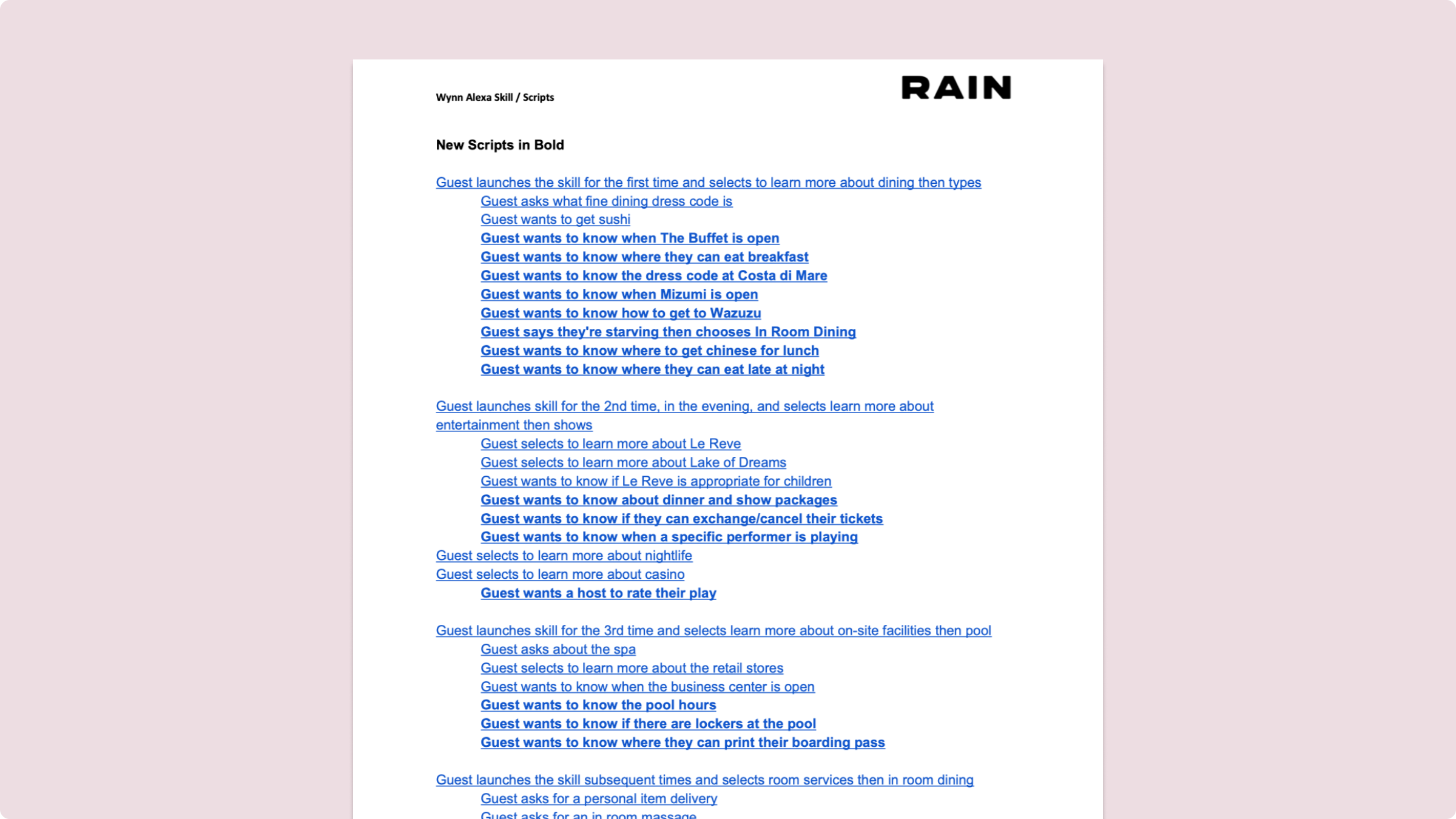
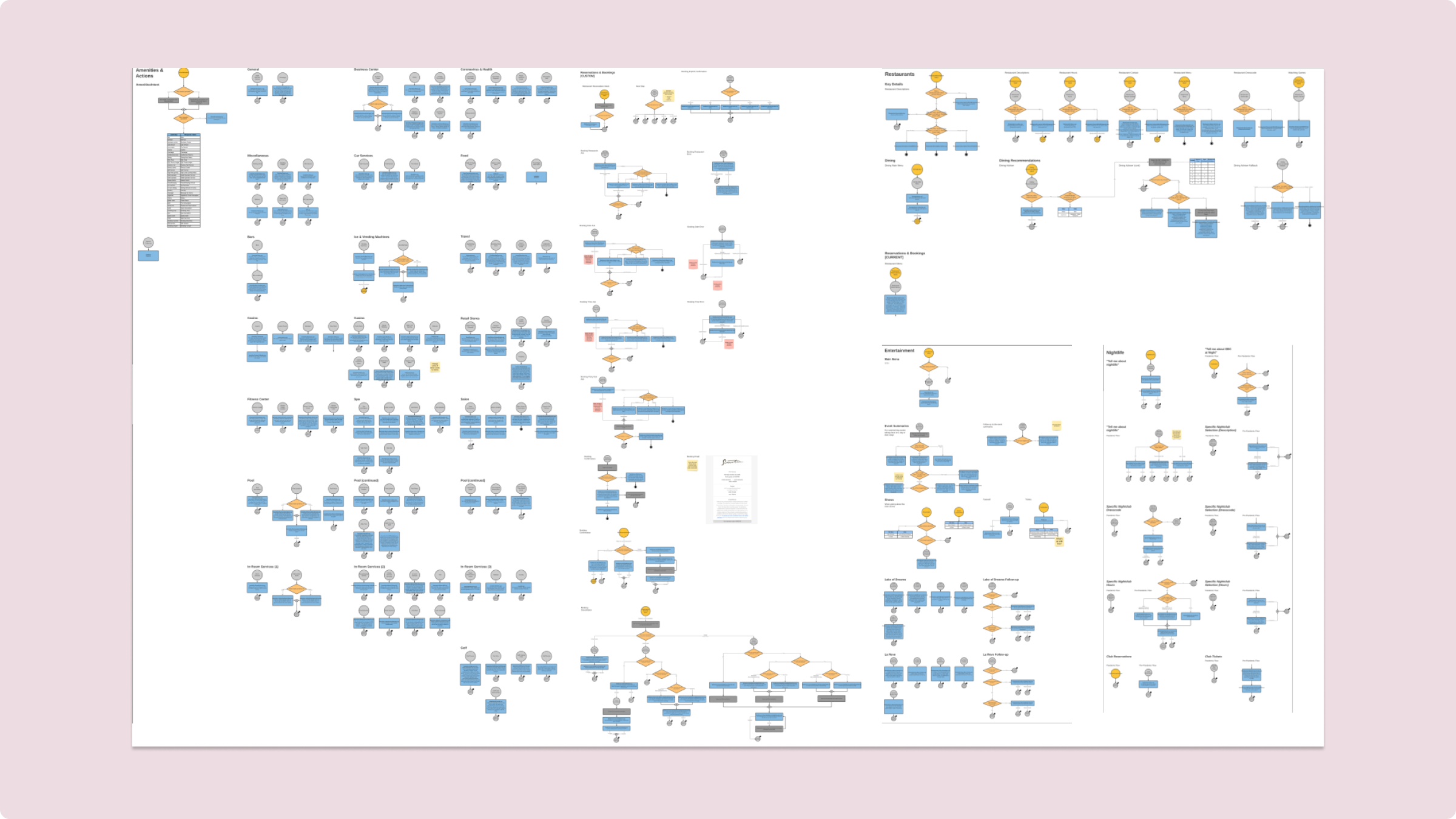
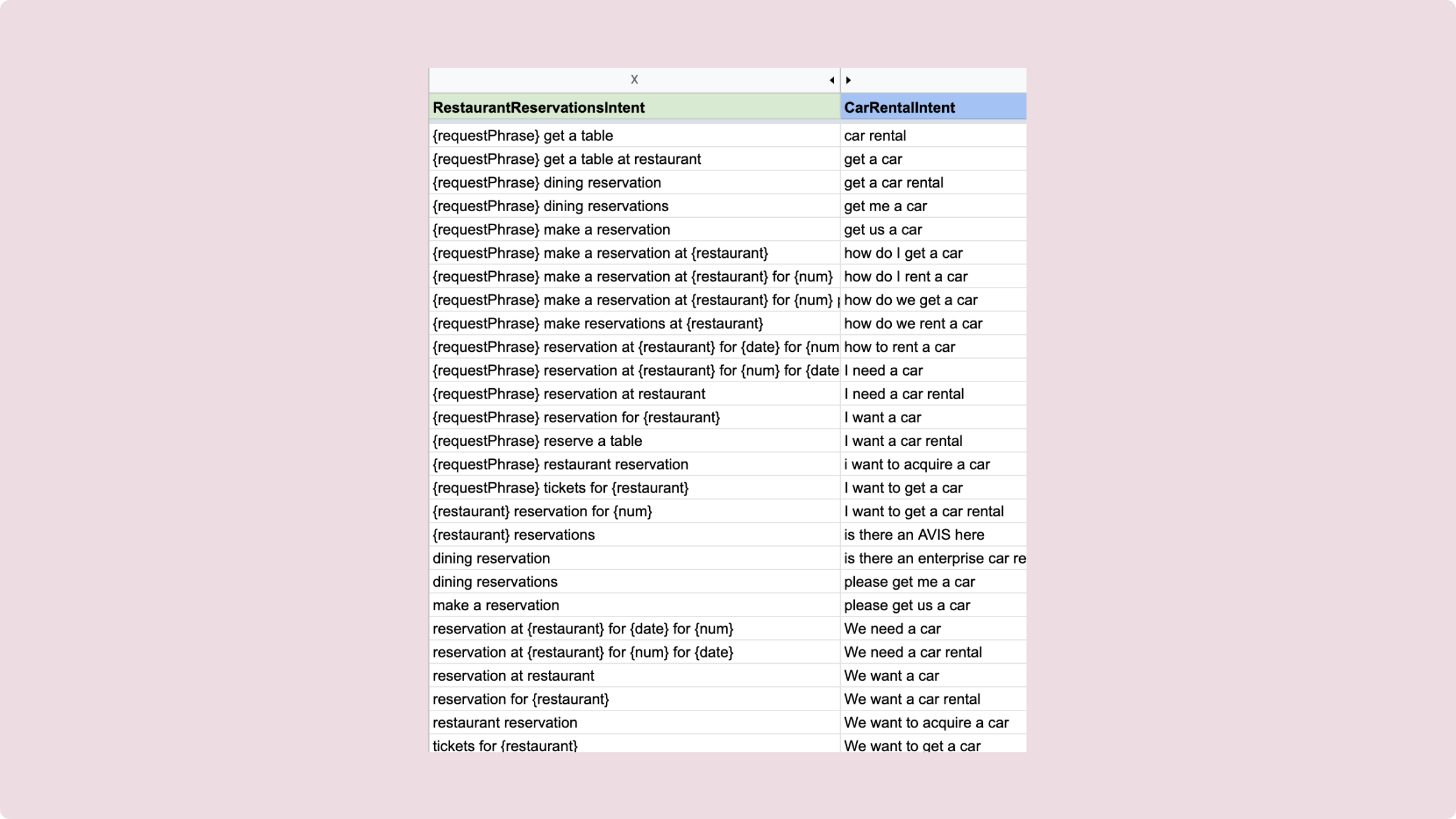
Launch
Assessing the impact
Wynn launched a trial period in a few rooms, and after some positive feedback, it rolled out to all rooms. And from there, it appeared to be a big success. Some of the key stats from the project:
85.6%
found the Alexa flow easy or very easy to use
83.7%
were happy or very happy with the service
4.8k
questions looking for bar or restaurant recommendations in the first two months, signicant for a voice-only application
12k
questions just about the hours of operations of bars, restaurants, and workout facilities in the first two months
Although our team never got access to the metrics around concierge volume, we had reasonable grounds for considering the voice application a success, at least as a pilot. In the first two months, it handled 16.8k utterances. Across 4900 rooms in 60 days' time, that’s 280 utterances a day. Said one executive:
“[Has the Wynn skill been successful?] Are you kidding me? Alexa is answering more than 12,000 inquiries a month just about our hours of operations for our 18 bars and restaurants, spas, and workout facilities. Even if you split that number in half, that’s the equivalent of a full-time employee.”
-Wynn Resorts VP of Operations
The hestitation is that we never learned whether that was evenly distributed across rooms or that number was due to a few “power-users.” And of course, at only 280 utterances a day, that means a significant number of devices were never interacted with on a per-day basis, though we also never learned the booking rate of these rooms during this two-month experiment.
Still, at least to management and the users polled, it appeared a success. Amazon published their own case study for this, advertising its success in hopes to appeal to other hotels. It seemed to have worked—Marriott Hotels adopted a similar pilot strategy, adding Amazon Alexa devices into hotels shortly after Wynn did.